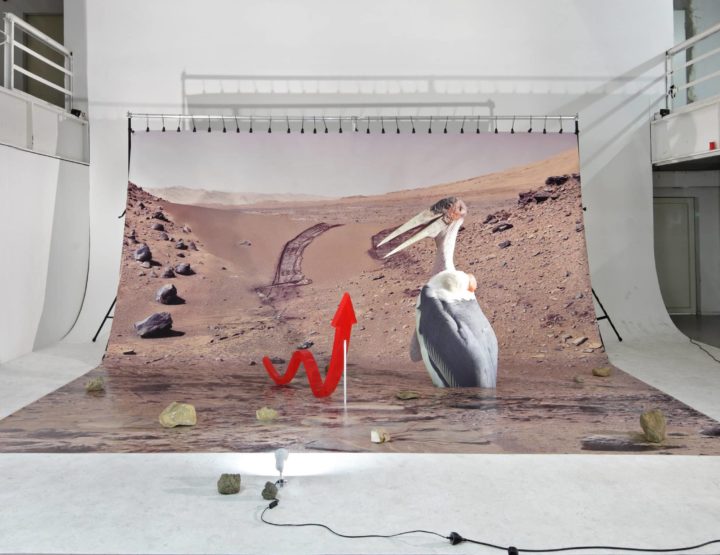An Estonian Russian artist living in Germany, Katja Novitskova, is one of the pathfinders of post-internet art. She is known as an Estonian artist despite the fact that she studied elsewhere and her art has practically nothing Estonian-specific in it, or does it? The statistics say that young Estonian Russians – a third of Estonians are Russian-speakers and non-citizens – wish to leave Estonia after high school as they do not see cultural and social roles for them in Estonia. It may be that a post-national internet identity is a way to ESCape from humiliations and the nation-state’s general network of lies, which seeks to maintain the integrity of the national identity and political system under the umbrella of military security. The internet was born out of warfare and post-internet art reflects this. Thus, there really is no longer an escape from the internet.
Unfortunately, post-internet art’s profile is that of a superficial aesthetic pretentiousness and it has largely succeeded in maintaining an apolitical status by putting its emphasis on self-marketing for original visual language, despite the fact that it resembles sci-fi movies from the final years of the Cold War, with its own extra touch. 2014 saw a turn in post-internet art in Estonia. Some of the artists and groups are widely know, such as Music For Your Plants, but most of them have yet to arrive. It could be said that the turn was brought about first by Hobusepea Gallery in Tallinn and then by the semi-online gallery Konstanet, which showed the new video State of Cloud by the artist duo SKATKA (Mikk Madisson and Rainar Aasrand).
SKATKA’s video State of Cloud (2014) deals with post-internet issues and aesthetics in an Estonian-specific manner. It plays with English and Estonian computer language, 1990s pop songs and Estonia’s current comeback through the widely popular Face Show (Your Face Looks Familiar, in the vernacular), Estonia’s reputation for e-success and the pride that the nation takes in this and myths of greasy pony-tailed IT-men; on the other hand, the video reflects on the world-wide increase in esoteric practices and beliefs. For example, the video shows that pony-tailed CERT-men form such an old myth that nobody even thinks of them any more because what they do is too intangible for most people.
Estonia’s e-image kicked off when Estonia survived a cyber attack from Russia in 2007 as part of the Bronze Night Riots, when many government and media servers were down and a lot of data went missing. In November 2014, Estonia introduced e-residency, which allows a person from anywhere to virtually move to Estonia, have an ID-card for banking and taxes, give digital signatures etc. Estonian IT developers, with the e-governance advocate and spokesman President Toomas Hendrik Ilves, have invested heavily, showing their high hopes that Estonia will have an international success with ID-card-based business.
There has not yet been a wider discussion of the internet of things and its culture in Estonia, much less post-internet art practices and their foundations. As long as there is no access to the technological resources for ordinary computer users and culture makers that are available in wealthier countries, post-internet art will not be able to reach the new audiences it desires. In contrast to technological development, which mostly takes place at international conferences for defence, economics and politics, there is no real access to tech wonders in public spaces; as a result, real discussions of internet technology can not start. Instead, many people are trying to escape the post-human state of being and are moving towards a spiritual connection with the four elements of the universe in order to become independent of wired energy, the free-masons’ third eye and constant CCTV stream. This is where post-internet art stems from with its ironical sense of humour making fun of the IT-dream, esoteric beliefs and ever-frustrating military politics.




